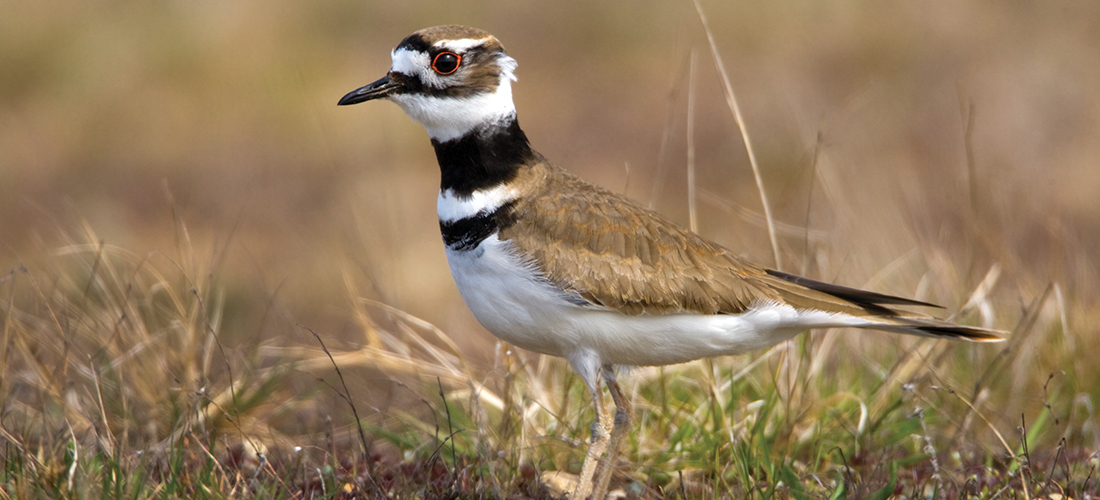
Shy and Dry
This time of year, the fields are teeming with Killdeer that call their own name day or night
By Susan Campbell
The killdeer is a small, brown-and-white shorebird that breeds in the Sandhills and Piedmont of North Carolina but is widespread throughout North America. It can be found here year round in the right habitat, but that doesn’t mean you should go looking for it in wetlands. Despite its classification as a shorebird, most of the population lives away from the water’s edge. In fact, for egg-laying, the drier the spot, the better! And in truth, sandy soil like that in the Sandhills, is not that much different from the beaches, where one would expect a shorebird to nest.
This robin-sized bird, not surprisingly, gets its name from its call: a loud “kill-deer, kill-deer” which can be heard day or night. During migration, individuals frequently vocalize on the wing, high in the air. Adults will also circle above their territory calling incessantly in early spring.
On the ground, killdeer are a challenge to spot. They blend in well with the dark ground and practically disappear against the mottled background of a tilled field or a gravel surface. Killdeer employ a “run-and-stop” foraging strategy as they search for insect prey on the ground. As they run, they may sir up insects, which will be easily gobbled up as the birds come to a quick halt. Although they live in close proximity to humans, they are quite shy. Killdeer are more likely to run than fly if approached. When alarmed, they frequently use a quick head bob or two. This may be a strategy to make the birds seem larger than they appear.
During the winter months, flocks of killdeer concentrate in open, insect-rich habitat such as ball fields, golf courses, or harvested croplands. Come spring, pairs will search out drier substrates, preferring sandy or rocky areas for nesting. They may even use flat, gravel rooftops. The female merely scrapes a slight depression where she lays four to six speckled eggs that blend in with the surroundings. She will sit perfectly still on her nest and incubate the eggs for three to four weeks. If disturbed by a potential predator, the female killdeer will employ distractive displays to draw the intruder away from the eggs. This may go so far as to involve feigning a broken wing. Calling loudly and spreading out her tail, the mother bird makes herself as noticeable as possible, limping along and dragging a wing on the ground. This “broken wing act” can be very convincing, giving the predator the idea that following the female will result in an easy meal. Once far enough from the nest, the killdeer will fly off, not returning to the eggs until she is convinced the coast is clear. Should distractions by the adults not be effective, the pair will find a new nesting location and begin again. The species is a very determined nester. Killdeer are capable of producing up to three broods in a summer.
Normally, the eggs hatch almost all at the same time. As soon as they have dried off, the downy, long-legged young will immediately follow their mother away from the nest to a safer, more protected area nearby. They will follow her around for several weeks, being fed and brooded along the way. Once they are fully feathered, the young will have learned not only how to escape danger but how and where to find food for themselves.
So, if you hear a “kill-deer” over the next couple months, stop and look closely: you may be rewarded with a peek into the summer life of this fascinating little bird. OH
Susan would love to receive your wildlife sightings and photos. She can be contacted by email at susan@ncaves.com.





